
29 minute read
Drawing Lots Rabbi Shalom Rosner
WITH RABBI SHALOM ROSNER Rav Kehilla, Nofei HaShemesh Maggid Shiur, Daf Yomi, OU.org Senior Ra"M, Kerem B'Yavneh
Drawing Lots
Advertisement
It is a bit peculiar that we refer to the holiday as Purim, which is derived from the “pur” – lottery, that Haman drew to determine the month during which to annihilate the Jewish nation. Why would we refer to the holiday with a name that represents the evil decree, rather than by a name which would highlight the salvation? The most common suggestion offered is that the entire episode described in the Megillah seems like one haphazard occurrence after another.Everything appears on the surface as a mere coincidence. Esther becomes queen, Haman seeks to kill the Jews, Mordechai is owed a favor, and Haman selects a tree upon which he is later hanged. That is how Amalek operates. Asher Korcha baderech – a chance encounter. Amalek seeks to instill uncertainty -safek – seeking to uproot any divine interaction with sheer happenstance. Naming the holiday “Purim” – underscores that it all appears as coincidence (like drawing a lot), but in actuality, Hashem is orchestrating behind the scenes.
Why, though, is the holiday called Purim in the plural and not Pur – to recall the single lot that Haman drew? The Bnei Yissachar suggests that there are two reasons for one to draw a lot. One is because
an individual cannot decide so he leaves the decision to be determined by chance. I am confused whether to buy a particular item from one of three individuals, so I draw lot to determine from whom to acquire the item. On the other hand, one could draw a lot because he wants the answer to be provided from above. To reveal Ratzon Hashem – God’s will and desire. To illustrate an example of the latter lot - we draw a lot when determining which seir l’azalzel and which seir la’Hashem on Yom Kippur. We leave it to Hashem to determine which animal will be sacrificed in the Mikdash and which will be thrown to the desert. In addition, in the time of Yehoshua a goral was drawn to determine which tract of land was to be allocated to each tribe, with the understanding that this lot was being drawn for divine inspiration.
On Purim, it could have been annihilation or salvation. Perhaps the name Purim – in the plural- was selected to highlight the two diametrically opposed types of lots and the fact that we experienced a true vnahafochuwhere the original purpose of Haman’s Pur, to prove everything is a coincidence and that God does not exist , ended up proving the opposite – Hashem’s presence and dominion! May we not only enjoy the festivities on Purim, but use the day to strengthen our Emunah and Bitachon in Hashem.
RabbiWein last serieslectureSat.night March 7–THE VERSAILLES TREATY 8 PM at Beit Knesset HaNassi _______________25 NIS donation ______________ NEW LECTURE SERIESNEXT WEEK 2020 VISION: UNDERSTANDING ANTISEMITISM TODAY THROUGH THE LENS OF THE JEWISHHOLIDAYS March14-Through the Purim Story(8:30) March 21-Through thePesach Story(8:30) March 28 –Antisemitism Today (8:45) Beit Knesset HaNassi(24 Ussishkin St.)–25 NIS DestinyFoundation5 DAY 4 NIGHT SHAVUOT EXPERIENCEAT THE LAVI HOTEL WITH RABBIWEIN AS SCHOLAR INRESIDENCE. The Destiny Group will be ina brand-new private dining room and buffetjust recently completed. Rooms all refurbished in thelast few years. Wednesdayto Sunday May 27-31 (Shavuot is Thursday night). Weare selling rooms quickly!! EARLY BIRD 500 NIS (equivalent) DISCOUNTONLY UNTIL PESACH! For prices, information,or questionswrite or call Nachum at _nachum@jewishdestiny.comor 0544-54-36-18
WITH REBETZIN SHIRA SMILES Faculty, OU Israel Center
The Mitzvot of Purim
Merriment, Megilah, mishloach manot and masquerading are all elements of the Purim motif. The day is so abounding with these activities that the fourth mitzvah of the day, matanot l’evyonim, gets less attention. Of course, we set aside money to give to the poor and give to all who ask, yet it is not always our prime focus of the day. Is there a way we can shift this mitzvah back to the fore?
Both mishloach manot, and matanot l’evyonim, are meant to counter the loshon hara that Haman spoke against the Jews. Haman claimed the Jewish people were spread apart and disconnected. Esther, therefore commanded to ‘gather the Jews together’ in fasting and praying. She understood that the key element of success for the Jews was unity. Maharal notes this idea is reflected in a compelling kri uketiv in the directive issued for the Jews to be prepared for retaliation on their enemies; “lehiyot hayehudim atudim/atidim layom hazeh” (Esther 8;13). The written word “atudim” is a reference to goats whose job it is to make sure the sheep are herded together. The crucial factor in preparation
for the great day of war was to ensure togetherness and unity among Am Yisrael. In giving money to all who ask, without question, we create this environment of affinity and mutual responsibility, the means to generate salvation.
Rav Matityahu Salomon in Matnat Chayim offers another poignant understanding of this mitzvah specifically on Purim. There is powerful concept of ‘Hashem is our shadow’; the way we act in this world creates a reciprocal response from Above. Mordechai, notes the Targum Sheni, although originally exiled from the land of Israel, had returned there, only to leave once again of his own volition to take care of Esther who had been orphaned from her parents. Mordechai thus acts as an ‘avi yetomim’, thereby stimulating a merciful act towards us as Hashem reached out to take care of His children. Each year, when we show kindness to the poor, the widows and orphans through matonot l’evyonim, we are inspiring a similar reaction from Heaven; a desire for Hashem to take care of us in this intense loving way.
The Slonimer Rebbe, in Netivot Shalom reminds us of yet another crucial attitude included in the mitzvah of matanot l’evyonim. When we give wholeheartedly to all who ask without discernment, we stimulate a similar response in shamayim,
for Hashem to give us all we ask for as well, even if we are not deserving. We should be mindful throughout the craziness of the day, that our tefillot have intense power and that the gates are open to receive our requests even if we are undeserving.
Perhaps the most critical aspect of this unconditional giving is to make us into giving people. When we accustom ourselves to give unreservedly, we become people of greater sensitivity and kindness. “Keyemu vekiblu”, Purim is a day of reaccepting Torah, a day of learning Torah. At the same time, it is a day of living Torah, to experience hand in hand, ‘Torat chayim veahavat chesed’. Let us give with joy and love, let us feel that giving is what defines us as being the special chosen people.
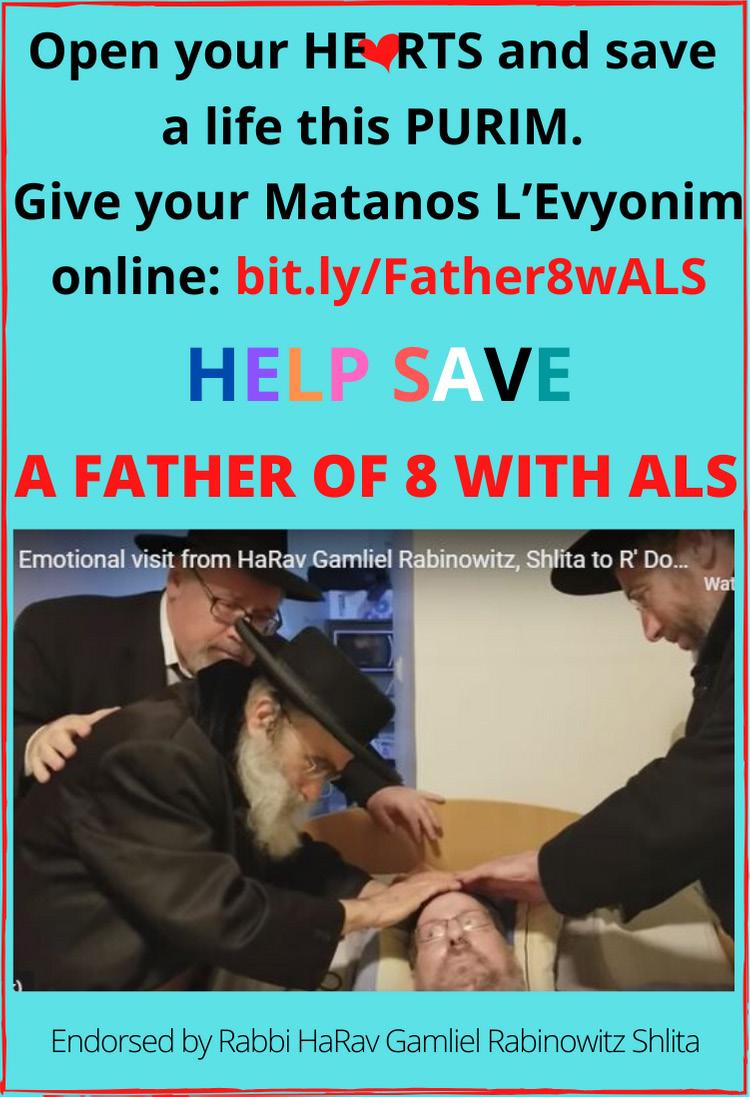
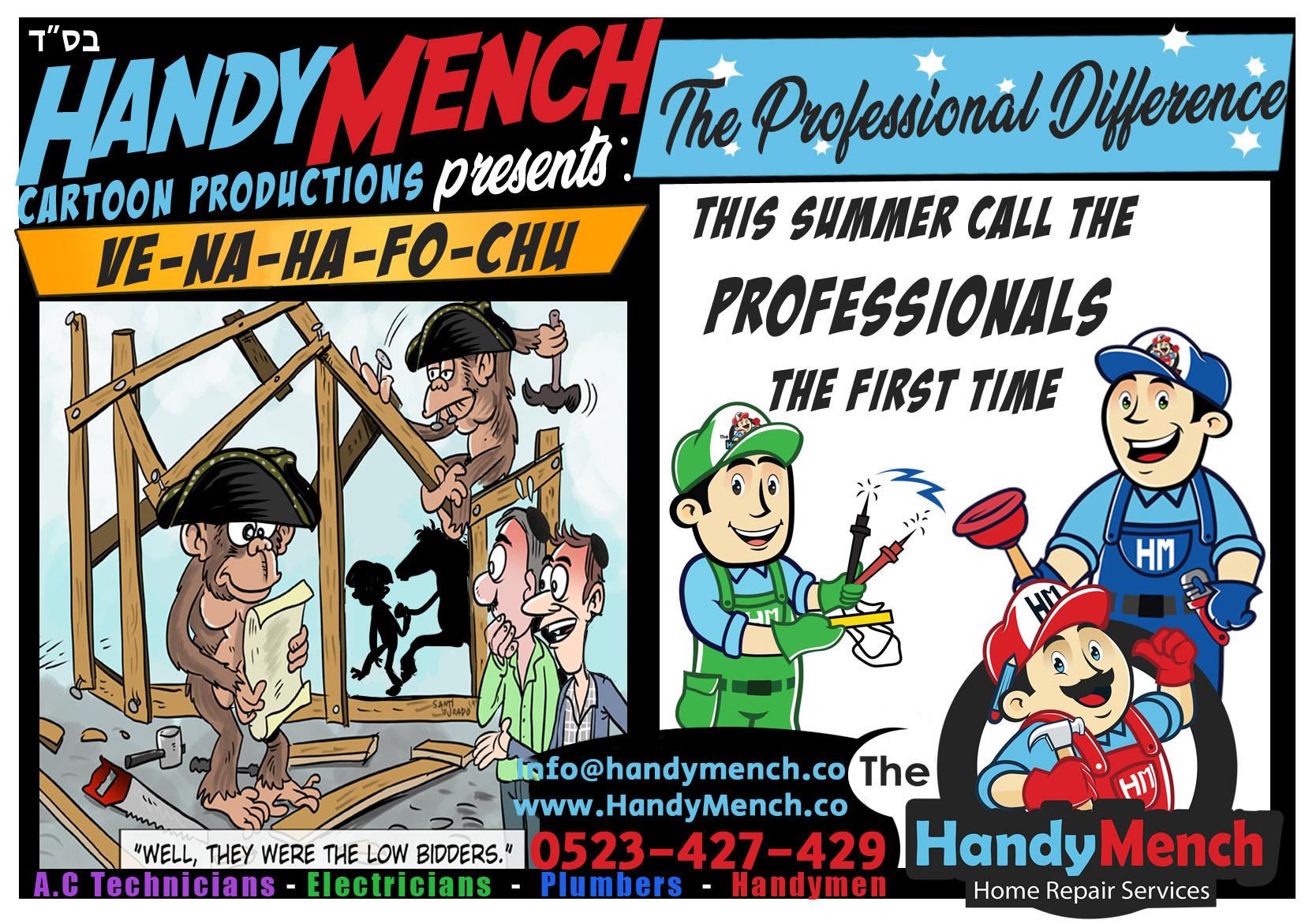
BY RABBI SAM SHOR Program Director, OU Israel Center
One Purim, the Bnai Yissascher,Reb Zvi Elimelech of Dinov, zy’a, stood up at his seuda and announced- Rabosai- lets go to our horses and carriages and blot out Amalek.
The Chasidim were shocked-had the Rebbe become so intoxicated that he intended to commit an act of violence?
So the Rebbe and his chasidim, boarded their carriages, and rode to the next town, where they arrived at a local tavern full of Polish peasants, who like Amalek of ancient times, certainly had no great love for the Jewish People. As the Rebbe and the chasidim entered the tavern, the music suddenly ceased, and all eyes turned toward the Rebbe. The room was suddenly silent.
The Rebbe extended his hand to one of the peasants, who slowly, reluctantly took the Rebbe’s hand, and together they slowly began to dance. The musicians began to play once again, and within minutes all those assembled, chasidim and peasants alike, had joined hands to dance with one another.
What can this story come to teach us about the mitzva to destroy Amalek? How do we understand this story of building unity, of breaking down stereotypes, as somehow being representative of the
mitzva of blotting out Amalek from the world?
Reb Levi Yitzchak of Berditchev, the Kedushat Levi, zy’a, explains based on the teaching from the Zohar, that each and every human being is an Olam Katan microcosmic world. Whatever exists in the physical world, explains the Rebbe, also exists metaphysically within the inner microcosmic world of each of us as human beings. If there is a metziut of Amalek, of evil, which we must work to wipe out in the physical world, so too we must strive to overcome the yetzer hara- the proverbial metziut of Amalek which exists within each one of us.
During these days of Adar and especially on the sacred day of Purim, we are reminded of the sacred task of breaking down barriers, of coming together as one, of repairing relationships, and bringing simcha and achdut to the world.
Yehi Ratzon, may we merit to take to heart these two powerful messages from the Bnai Yissascher and Kedushat Levi, and truly celebrate with great harmony, in these sacred days ahead.

Mayanei Hayeshua Takes the Role of the Medical Clown Very Seriously
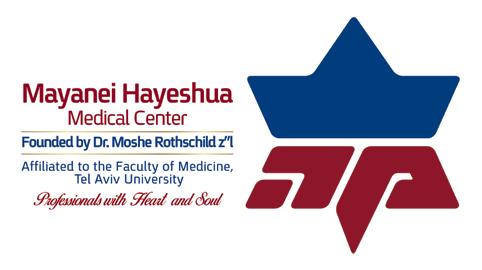
Medical clowning as a form of alternative healing is a relatively new field that channels the healing power of humor to improve the function and quality of life of hospitalized patients, especially children. Using skills such as magic tricks, balloon shaping and storytelling, medical clowns provide hospitalized child patients with moments of fun and laughter that will assist them in dealing with some of the emotions they experience during their hospital stay, such as anxiety, loneliness and boredom.
Studies show that medical clowns can also assist in reducing the level of pain that children experience. No one likes shots; especially not children. Many child patients and their parents now choose the humor of the medical clown to sedation with nitrous oxide [“laughing gas”].
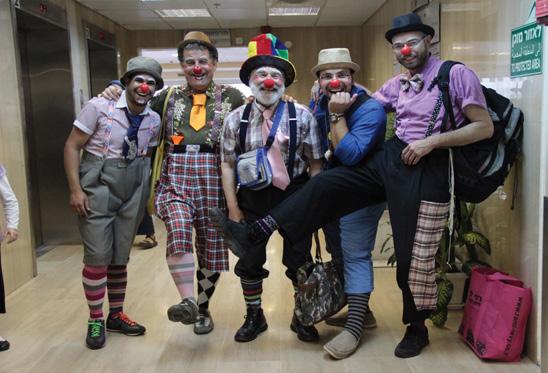
Mayanei Hayeshua Medical Center was one of the first of several Israeli hospitals where the medical staff acknowledges that medical clowns can divert the child’s attention away from the painful and scary procedures and assist them in adapting to hospital routine. The atmosphere of fun and laughter that medical clowns engender helps the children forget their illness and fears for a while.
When Yehoshua “Shuki” Lidesky first strolled into the regular wards in Mayanei Hayeshua dressed in his clown costume, patients were sure he had lost his way, and directed him to the pediatric ward. But Shuki the Clown knew exactly what he was doing:
“People always associate the childish, endearing role of the clown with young children, but I find that adults actually need the sort of joy that a clown can bring as much as children. While a circus clown makes you laugh, my purpose as a medical clown is to lighten the heavy atmosphere in the room. Sometimes this is achieved through magic tricks or balloons, but often I find lonely adult patients who have nobody to listen to them. Because the busy nurses and doctors don’t have time to listen to these people’s personal stories and distresses, I simply sit and listen to them.”
“In my medical clowning studies, beyond learning to divert a person’s attention away from everything going on in the hospital through magic tricks, I learned about communication and active listening. At Mayanei Hayeshua, it’s not only patients who benefit from the medical clown. I also work with the doctors, the nurses and even with the maintenance staff.”
For more details please contact Chaim Fachler at chaimf@mhmc.co.il or visit our website www.fomhmc.org
KI TISA
STATS
21st of 54 sedras; 9th of 11 in Sh'mot
Written on 245.17 lines in a Torah (8th)
14 Parshiot; 10 open, 4 closed
139 p'sukim (10th), 1st in Sh'mot
2002 words (5th), 1st in Shmot
7424 letters (8th), 1st in Sh'mot
Large sedra in general plus relatively long p'sukim, which explains the jump in rank from 10th for p’sukim to 5th for words. Only 4 other sedra have more than 2000 words.
[P> X:Y (Z)] and [S> X:Y (Z)] indicate start of a parsha p’tucha or s’tuma. X:Y is Perek:Pasuk of the Parsha’s beginning;
(Z) is the number of p’sukim in the parsha.
Numbers in [square brackets] are the Mitzva-count of Sefer HaChinuch AND Rambam’s Sefer HaMitzvot. A=ASEI; L=LAV (prohibition). X:Y is the perek & pasuk from which the mitzva comes.
KOHEN FIRST ALIYA 45 P'SUKIM - 30:11-31:17
MITZVOT
9 mitzvot; 4 positives, 5 prohibitions
9 doesn't seem like very many mitzvot, but only 17 of the other 53 sedras (less than a third) have more mitzvot


[P> 30:11 (6)] The first 6 p'sukim of the sedra are the portion of the Mitzva of the Silver Half-Shekel [105, A171 31:13], which is also read as the Maftir for Parshat Sh'kalim.
MITZVAWATCH
The silver half-shekel was used to count the People and to create the fund for the purchase of communal offerings throughout the year, as well as other sacred needs of the community. The half-shekel was required of males from age 20 and up. It was optional for women. (Since the halfshekels were used to count the standing army, it was necessary to keep separate records of the optional contributions of women. Nonetheless, women could fulfill this mitzva.) Sh'kalim were NOT accepted
from non-Jews. (There were funds in the Beit HaMikdash to which a non-Jew may contribute, but NOT the half-shekel. It is sort of like membership dues in Klal Yisrael - for members only.)
Without the Beit HaMikdash, we do not perform the mitzva, but we have commemorative practices, namely the reading of Parshat Sh'kalim (on the Shabbat of or right before Rosh Chodesh Adar (Sheni), which was when Sh'kalim were "announced") and the giving Zeicher L'Machatzit HaShekel before Megila reading (there is a connection between our mitzva of Sh'kalim and the sh'kalim that Haman promised the king in return for permission to kill the Jews in the kingdom).
Remember: Today we don't give Machatzit HaShekel, we just commemorate it. This is an important distinction.
[P> 30:17 (5)] The next portion deals with the Laver and its stand (KIYOR V'CHANO), for the Kohanim to wash their hands and feet before their sacred Avoda [106, A204 30:19]. A kohen who does not wash (sanctify) his hands and feet before doing "service" in the Beit HaMikdash is liable to "death from Heaven" and the korban he has brought is invalid.
Next follows the command to take specific quantities of various spices, mix them with olive oil, and prepare the special "anointing oil". The Kohen Gadol and kings of Israel are to be anointed with this oil [107, A35 30:31], as were the sacred vessels of the Mikdash. It is forbidden to use this oil for personal use [108, L84 30:32], or

Egert & Cohen. We’ve got you covered.

INSURING YOUR: Home | Health | Life | Auto | Business | Travel
even to dare dishonor the Mikdash by copying the spiced oil for personal use [109, L83 30:32].
[S> 30:34 (5)] We are next com- manded to compound the K'toret, the incense offered twice daily in the Mikdash. The mitzva of K'toret is presented and counted in T'tzaveh; here we have the prohibition of compounding the same formula for personal use [110, L85 30:37].
[S> 31:1 (11)] G-d tells Moshe that B'tzalel shall be in charge of the actual construction and fashioning of the Mishkan and its contents. His assistant shall be Aholiav of Dan, and a team of skilled artisans shall join in the work. All the objects in and of the Mishkan are enumerated, as the tasklist of B'tzalel and his team.
[P> 31:12 (6)] At this point, G-d reminds Moshe that the Shabbat may not be violated, even for the construction of the Mishkan. (We might have thought otherwise, due to the sacredness of the endeavor, hence, this reminder.) Shabbat is the eternal sign between G-d and the People of Israel.
SDT: Shabbat and Mikdash "rub elbows" several times in the Torah. They complement each other, in that Mikdash represents the Sanctity of Place, and Shabbat represents the Sanctity of Time.
LEVI SECOND ALIYA 47 P'SUKIM - 31:18-33:11
[S> 31:18 (7)] The Torah now returns to telling us of the last part of Matan Torah, which was "interrupted" (so to speak) by the parshiyot of the Mishkan, i.e. all of T'ruma and T'tzaveh and the first third of Ki Tisa. G-d gives Moshe the Tablets of stone... (meanwhile, back in the camp...) When the People saw (or thought) that Moshe was delayed in returning from Sinai, they feared that they would be leaderless, and they appealed to Aharon to do something. Exactly what he did is the subject of different opinions, but his delaying tactic resulted in the emergence of the Golden Calf. Most of the people were confused and did nothing (which was part of the problem), but 3000 men arose and reveled in the Calf, declaring it the god of Israel.
[P> 32:7 (8)] G-d told Moshe to look at what the People were doing in his absence. G-d indicates to Moshe that the People are deserving of destruction.
The first part of Moshe's reaction is PRAYER. (This isn't always first on his list, but it is here. Part of the greatness of Moshe Rabeinu is his knowing when to pray long, when short, and when to take action immediately and leave prayer for later. This is something that we should try to learn from him). His petition before G-d starts with the practical argument, "What will Egypt say?" Then Moshe mentions the Avot and asks G-d to forgive the people because of them, and the promises G-d had made to them. The combination of these two points seems to succeed, because Moshe is "rewarded" with G-d's expression of regret (so to speak) for what He had said He would do to the people.
[P> 32:15 (21)] Next, Moshe turns and descends the mountain with the Luchot in his hands. When he sees the calf, the Tablets either slip from his hands and break or he intentionally smashes them (opinions differ). He seizes the calf, destroys it, spreads its ashes over the water, and prepares a potion for the people to drink. He asks Aharon what happened.
He calls to those "who are on G-d's side"; the Leviyim rally to his call and kill those who dared "worship" the Calf.

On the following day (the exact sequence of events is debated by commentators), Moshe castigates the people, tells them of the enormity of their sin. Then he tells them that he is returning to G-d (so to speak) up the mountain, to continue pleading Israel's case before G-d. G-d promises to punish those at fault.

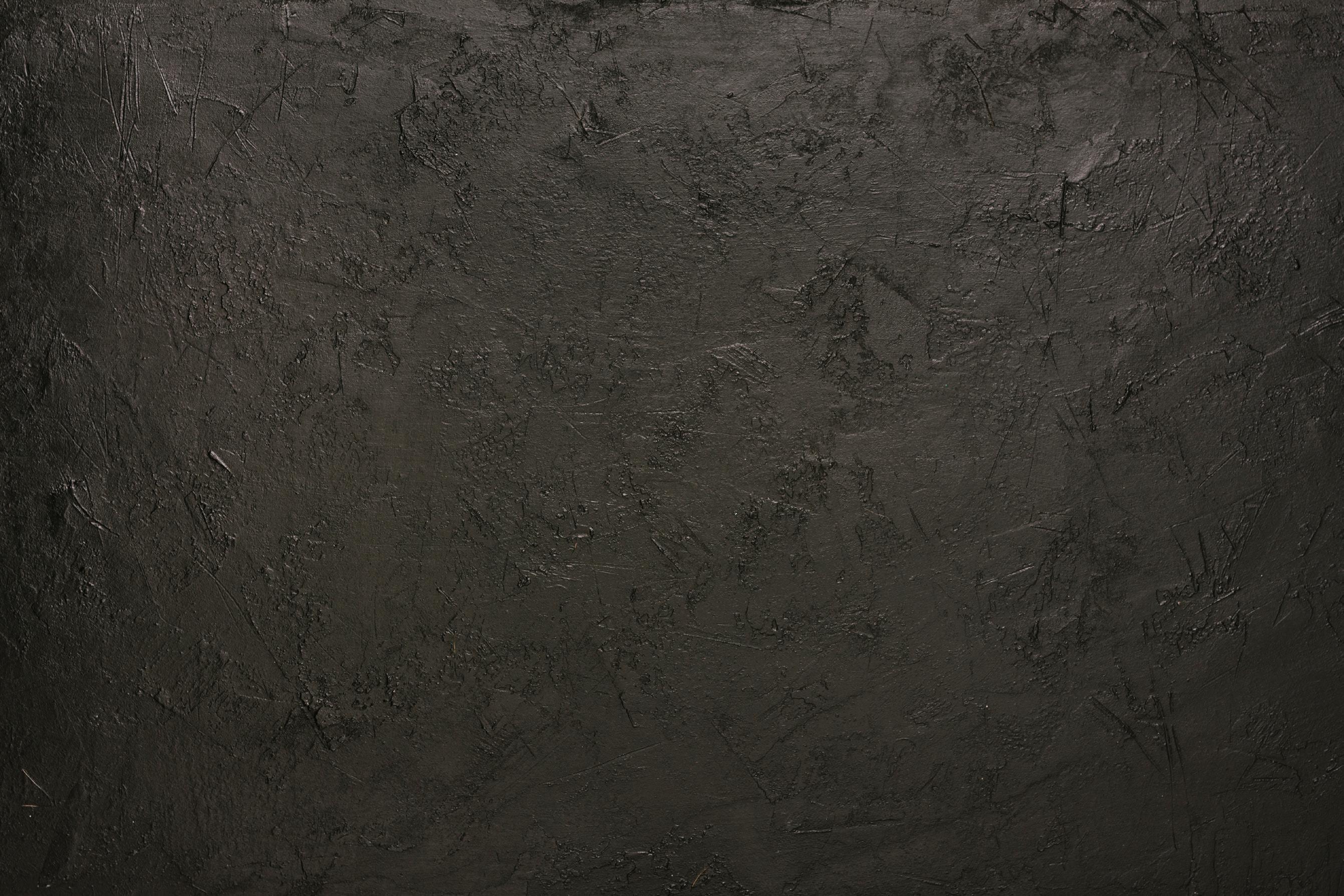
[S> 33:1 (11)] As a result of the Golden Calf, G-d distances Himself from the People. He does, however, reiterate His promise to give them (us) the Land. And, He tells Moshe to have the people continue towards Eretz Yisrael, but without G-d in their midst. The People are distraught by G-d's words. Moshe too removes himself and his tent from the midst of the camp. Moshe remains in direct contact with G-d... and Yehoshua was constantly in the Tent.
SHLISHI THIRD ALIYA 5 P'SUKIM - 33:12-16

[P> 33:12 (5)] Moshe argues that G-d must remain in the midst of the People in order to demonstrate that He truly chose

us. One senses the unique relationship between G-d and Moshe that permits Moshe to speak to Him the way he does. At the same time that our relationship with G-d was chang- ing because of the Golden Calf, Moshe was asking G-d for a more intimate understanding of the Divine Essence.
R'VI'I FOURTH ALIYA 7 P'SUKIM - 33:17-23
[P> 33:17 (7)] G-d agrees to Moshe's request, because of His special feelings towards Moshe. Then Moshe asks that G-d reveal more of Himself to him (Moshe). G-d tells Moshe that such a revelation is impossible, but that Moshe will be able to experience more of G-d's essence. This, with the understanding that it won't be every- thing. The p'sukim in this portion of very enigmatic.
CHAMISHI 5TH ALIYA 9 P'SUKIM - 34:1-9
[P> 34:1 (26)] This portion (also read on Fast Days) contains the 13 Divine Attributes. One can say that not only did G-d forgive the People for the Golden Calf, but He also gave them (us) the method of approaching Him in prayer. Not only are we to recite these 13 Attributes, but we must emulate as many of them as possible. "Just as He is merciful, so too must we be merciful..." In this way we will KNOW His Attributes, live by them, and not just mechanically recite them. G-d next tells Moshe to cut new stones to replace the ones he has broken. Moshe again ascends Sinai to receive the Luchot, the Attributes, and Divine Forgiveness. This 40 day period - Elul through Yom Kippur, become days of special closeness between G-d and us for all times.
SHISHI SIXTH ALIYA 17 P'SUKIM - 34:10-26
Our position relative to other nations is conditional upon our keeping of the mitzvot. We are forbidden to make covenants with the nations in Eretz Yisrael. Specifically, we are forbidden to eat or drink of idolatrous offerings [111 34:15 - the only mitzva counted by the Chinuch that is not on Rambam's list (there's one Rambam mitzva that the Chinuch doesn't count)].
All this to avoid falling to their temptations and to avoid intermarriage. We must destroy their idols.
We are commanded to keep Pesach in the Spring. (This is one of the p'sukim responsible for our two Adars - 7 times in each 19-year cycle - not as rigid a pattern when we set the Calendar by Sanhedrin). In a direct link to the Exodus, we have three types of B'CHOR mitzvot - human (who must be redeemed), kosher farm animals (which are given as a gift to a kohen and may not be redeemed, but are holy and to be brought as a korban), and donkey (which should be redeemed - PIDYON PETER CHAMOR, with an unpleasant, less preferred alternate).
Shavuot and Sukkot complete the cycle of the Pilgrimage Festivals; males are required to appear at the Beit HaMik- dash (and not empty-handed). This mitzva (and others) guarantees our hold of the Land. Shabbat and the Land's Shabbat, Sh'mita [112, A135 34:21], are mentioned.
Korban Pesach may not be brought in the Mikdash while its owner owns Chametz, nor may we leave Korban Pesach over until the morning.
Bikurim are to be brought to the Mikdash and meat-milk mixtures (that are cooked together) may not be eaten [113, L187 34:26].
MITZVAWATCH
The Torah prohibits the cooking of meat in milk, three times. We are taught that there are three prohibi- tions of meat and milk mixtures that are cooked together: the act of cooking meat with milk, per se, regardless of what will be done with the food, the eating of such mixtures, and the deriving benefit of any kind from such cooked mixtures. Rabbinic law further prohibited the eating of mixtures of milk and meat even if they have not been cooked.
SH'VII SEVENTH ALIYA 9 P'SUKIM - 34:27-35
[P> 34:27 (9)] G-d commands Moshe to write the Torah (and not the Oral Law and explanations, which must be transmitted orally). Moshe spent 40 days and nights on Adam Farkas, MD
Do you suffer from urinary problems?
Enlarged prostate (“BPH”) affects most men over age 50 Prostate Artery Embolization (“PAE”) is a minimally-invasive technique with similar results to surgery and immediate return to normal activities jerusalemvascular.com 02-564-5634 02-655-5014
Efrat and Gush Etzion www.angelrealty.co.il For Sale in Tamar Luxurious and modern 5 room apt. + option. Great location 1,875.000 NIS

For Sale in Dekel 7.5 room cottage. 200m, Stunning view. (Ezra st.) 2,150,000 NIS
For Sale in Dagan Stunning modern cottage, 250m, 8.5 rooms + option 3,950,000 NIS Tzippy - 0524588715
Har Sinai, not eating or drinking, during which time, the second set of Luchot were written.
When Moshe came down from the Mountain, he was unaware of the spirtual radiance that glowed on his face. Aharon and the People were afraid to approach. Moshe called to Aharon and the Leaders of the People, and spoke to them words of Torah and their explanation. Then all the people came to Moshe to be taught what G-d had spoken to him at Sinai.
When Moshe finished speaking to the people, he covered his face with a hood (mask/veil), which he removed when- ever he spoke to G-d. He would then transmit G-d's words to the people.
This would be repeated over and over again. Moshe would cover his face until the time he communicated with G-d.
MAFTIR 2ND TORAH 22 P’SUKIM; BAMIDBAR 19
Parshat Para is read on the Shabbat before Parshat HaChodesh which presents us with the mitzvot of Korban Pesach, because the most common and important time for ritual purification on the part of most of the people was around the beginning of Nissan, as part of one's preparation to be in Jerusalem for Pesach and to bring and eat KP. Parshat Para from Parshat Chukat, contains the mitzvot of Para Aduma - that is, the preparing of the potion from the ashes of the Red Heifer, the general mitzva of the concept of ritual impurity from contact with a corpse, and the mitzva of purifying oneself with the Para Aduma potion.
HAFTARA 33 P'SUKIM YECHEZKEIL 36:16-38
S'faradim end 2 p’sukim earlier
The Haftara takes the concept (from the Maftir) of an individual becoming TAMEI and requiring purification with special water as an analogy for the people of Israel who defiled themselves with the sin of idolatry and other sins, and their (our) need for a purification process with "G-d's spiritual waters of the Torah".
There is a "hard" message in this haftara, among others.
G-d expresses His great disappointment with the people of Israel. And He punished them (us) very harshly. But then He says that His name was being desecrated among the nations of our dispersion, because the nations mockingly asked about the great nation of G-d and how low it had sunk.
So G-d decides, so to speak, and announces that He will redeem the people of Israel, even if they (we) don't deserve it, for His own sake.
This is hard reproach, indeed. But rather than discourage us, it should spur us on to put the lie to this prophecy - so to speak - by being worthy of redemption on our own merit.
Purim is here.
It is time to order Healthful Specialty Shmura Matza:
• Organic Hand Whole Wheat
• Hand Whole Wheat
• Organic Hand Whole Spelt
• Organic Machine Whole Spelt
• GF Gluten Free Hand Oat
• GF Gluten Free Machine Oat
Pickup in Jerusalem (Nachlaot, Neve Yakov, HarNof) and Ma’ale Adumim.
Pickup in other locations, such as in past years, we will have pickup points in in BS and RBS, Tzfat, Efrat, Neve Daniel, Haifa, Rehovot, BeerSheva, Ashkelon, Ra’anana, Yad Binyamin, Modi’in
For more details: email Hillel Levin, the Matza Man at
hillel.leib@gmail.com
dominoes. Twice we find the word SHISHA, which does mean 6 - represented by the horizontal domino Lipstick is for ODEM, which, in the context of the sedra, refers to the first of the Breastplate's gemstones. The emblem is that of Yale University, with the words printed on the open book purposely covered up, to test you before reading these expla- nations. The words are URIM V'TUMIM, in Hebrew, which are also rendered in Latin in the banner below the crest NER TAMID is a term borrowed by our shuls from the Torah's description of the Menora • Seat belt logo is for the word V'CHAGARTA, re the AVNEIT Upper-right is a hand fully opened. The distance from the tip of the thumb to the tip of the pinky is called a SPAN. In Hebrew it is the unit of measure called a ZERET (which is also Hebrew for pinky), which equals one-half an AMA. The CHOSHEN was made one by two ZERETs and folded in half when worn by the Kohein Gadol plus several Unexplaineds Ki Tisa - Para: The abacus is for keeping the tally of the census half-shekel represents (only represents - it isn't THE half-shekel) the silver half-shekel that was used for the count Faucet stands for the washing basin and the kohein's requirement to wash hands and feet before doing service in the Mikdash. Note the cold and hot faucets. The Temple Institute in Jerusalem is making a new KIYOR for the next Beit HaMikdash. Part of the new design includes water temperature regulators so the kohanim will have comfortable water for their use • Mortar & pestle to grind the spices for the incense (K'TORET) and the special anointing oil Olive oil for that same SHEMEN HAMISHCHA Two fellows checking the blueprints are Betzalel and Aholiav, the two chief craftsmen in charge of Mishkan construction Shabbat candles for the reminder to keep Shabbat Edited version of Davka's Golden Calf graphic Davka graphic of Moshe holding the Luchot high Hatchet that Moshe used to destroy the Eigel, or the tool CONTINUED FROM P.2
used to fulfill the commands at the end of the sedra to destroy the Avoda Zara in the Land of Israel upon our entry and conquest • Slab of meat with ice cream pop in a frying pan over a camping stove. Stands for the ISUR of Basar b'Chalav Welder's mask might be the most appropriate method of shielding the people from Moshe's radiance (so too in the footer) Quill and feather remind us of the command of G-d to Moshe to write down the Written Torah Matza is matza, as in a reiteration of the command to eat matza on Pesach Ear with earring refers to the stalling tactic of Aharon which resulted in the Golden Calf Eraser stands for Moshe's powerful statement to G-d: If you don't forgive the people then erase me from the Book which You wrote Black goblet was used to give the people the Golden Calf potion that Moshe prepared from the remains of the destroyed calf. It can also be for Kiddush, as part of the Shabbat morning Kiddush comes from Ki Tisa - V'SHAM'RU Look again at the goblet. It is a famous optical illusion. Focus on the white on either side of the stem of the goblet and you will see two face-to-face profiles, as in PANIM EL PANIM, the description of the direct communication between G-d and Moshe Rabeinu At the bottom is a rare S'fardit-Ashkenazic Visual TTriddle. The KEY is the KI in KI SEESAW, if you follow the KEY with the SEESAW below it - or KI TISA, if you follow the KEY with the El Al flight number large L and a large CC representing the big NUN (L=50= NUN) in the word NOTZEIR, within the portion of the 13 Midot of HaShem, and a large REISH (CC= 200=REISH) in the word ACHEIR, as in EIL ACHER, another god The B'SAMIM box is for the B'SAMIM, mentioned in the passage of the anointing oil Below that is MYRRH, MOR in Hebrew, mentioned as an ingredient in the anointing oil The grapes and wheat at the bottom-right represent BIKURIM, first fruits, which is a mitzva in Ki Tisa Photo of the Kiyor Para Aduma for Parshat Para
FULL DETAILS... TWICE It is fairly well-known that the details about the Mishkan (first fulfillment of the mitzva to make a Mikdash, and as a result, G-d will dwell among us (within us) - are presented twice in the Torah. The commands are in T'ruma and T'tzaveh and the first third of Ki Tisa. The carrying out of those commands is the content of Vayak-heil and P'kudei. The famous question is why we need the full details, twice. After the details in T'ruma and T'tzaveh, the Torah could have said simply, and B'nei Yisrael did all that G-d commanded them via Moshe. The fact is that between both sets of details, we have the terrible betrayal episode of the golden calf and its aftermath. The first set of details was given by G-d to Moshe during the 40 days and 40 nights he spent atop Har Sinai. The people of Israel had no clue about the Mikdash at that time. We know about it because it is in the Torah. That generation did not know about it yet. The plan was for Moshe to come down the Mountain and teach B'nei Yisrael all of the mitzvot, including the making of the Mishkan. He didn't get a chance at first, because of Egel HaZahav. When he came down again almost three months later, he brought the second set of Luchot with him and G-d's message of forgiveness. This was on the first Yom



Kippur. Shortly thereafter, Moshe gave the commands concerning the Mishkan. We need to see the whole Mikdash picture when it was actually made, and we also need to see the whole thing in its original pristine state - before the Calf. Here's my MASHAL... (parable) Parents of a teenage boy decided to buy him the top-of-the-line cellphone - loaded with the best games and educational apps - for his upcoming birthday, two weeks hence. They hid the phone in their closet, waiting for his birthday. A week later, they were summoned to the office of the principal of his school. They were shocked to find out that their son was having serious problems, scholastically and socially in school. They asked the principal for advice. He recommended that they get him the latest cellphone loaded with the best apps to help him readjust to school. That evening, the parents had a very serious talk with their troubled son. They gave him the cellphone and emphasized their hope that it would help him on many levels. He looked at the phone as a potential remedy for his problems. At some point later, the parents told him that they had bought it before they knew of his troubles. The son needed two different perspectives of the phone to really appreciate it. So do we, about the Mikdash.
On another note: It is well-known that Moshe's name is absent from T'tzaveh. T'ruma has his name only once. But Ki Tisa - the sedra in which he asked for his name to be erased, has the most occurrences of his name - 49!







